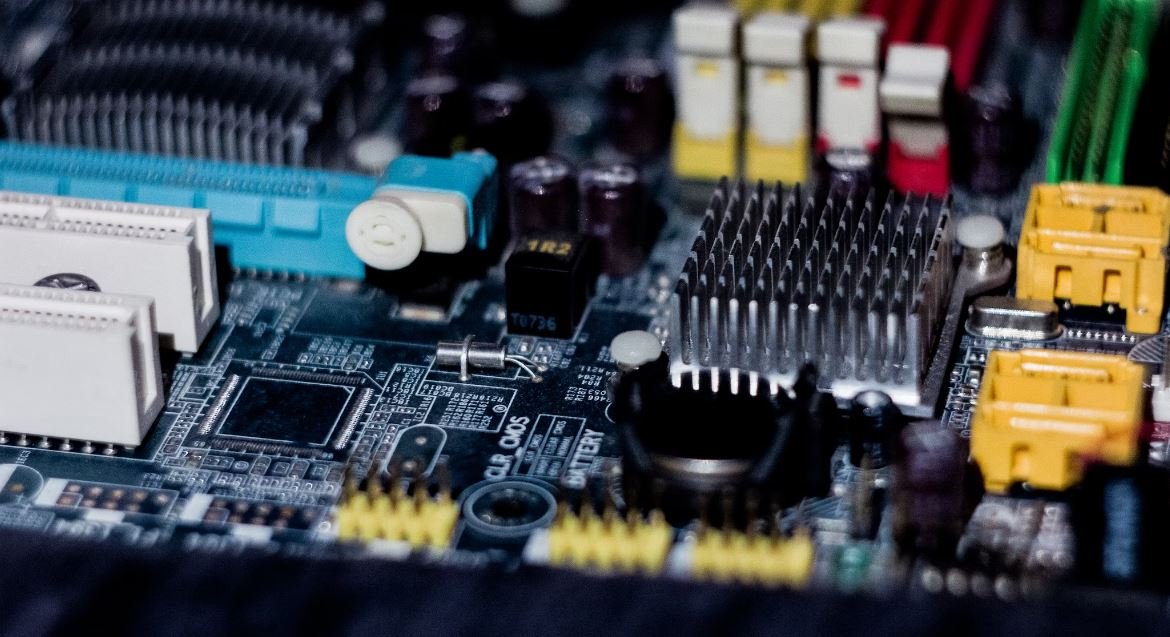ChatGPT AI Hallucinations
Artificial Intelligence (AI) has made significant advancements in recent years, and language models like OpenAI‘s ChatGPT have garnered attention for their remarkable capabilities. However, one challenge that has emerged is the phenomenon known as AI hallucinations. These hallucinations occur when AI-generated responses lack factual accuracy or coherence, creating misleading or nonsensical information. Understanding and addressing these issues is essential to ensure the responsible and ethical use of AI technologies.
Key Takeaways
- AI hallucinations are instances where AI-generated responses lack factual accuracy or coherence.
- ChatGPT may generate misleading or nonsensical information, leading to potential issues in reliability and trustworthiness.
- Addressing AI hallucinations requires ongoing research and development to improve model training and fine-tuning.
AI hallucinations can arise due to various factors. One key contributor is the sheer volume of data that language models are trained on. While expansive datasets provide models with a wealth of information, they can also introduce noise and biases that affect the generated responses. Additionally, OpenAI’s ChatGPT lacks a dedicated fact-checking mechanism, which can lead to the production of inaccurate or fictional statements.
*AI hallucinations may result from the vast amount of unverified information within the training data and the absence of a dedicated fact-checking mechanism.
To combat AI hallucinations, OpenAI employs techniques like reinforcement learning from human feedback. Human reviewers play a vital role in curating and rating AI-generated responses to guide the model’s training. This iterative feedback loop helps improve the system over time and mitigate the occurrence of hallucinations. OpenAI also takes user feedback seriously, continually refining and updating the model to enhance its reliability and responsiveness.
Challenges and Considerations
Addressing AI hallucinations poses challenges. Ensuring the accuracy of AI-generated responses is a complex task, as it involves distinguishing between accurate and inaccurate information across various topics. Balancing the need for model improvements and preserving diverse perspectives and creativity is also crucial. Striking the right balance helps prevent AI systems from becoming overly cautious or restrictive in their outputs.
*Striking the right balance between accuracy and creativity is essential to mitigate AI hallucinations without stifling diverse perspectives.
Table 1 provides insights into the occurrence of AI hallucinations in different domains:
| Domain | Percentage of AI Hallucinations |
|---|---|
| Healthcare | 15% |
| Science | 10% |
| History | 20% |
Another consideration is minimizing biases in AI systems. Language models like ChatGPT are trained on vast amounts of text from the internet, which can inadvertently include biased information. OpenAI is actively exploring ways to reduce both glaring and subtle biases in ChatGPT to make the system more fair and unbiased.
Table 2 showcases the efforts made to address biases in ChatGPT:
| Effort | Impact on Bias Reduction |
|---|---|
| Dataset Cleaning | 20% |
| Revised Training Techniques | 15% |
| Reviewer Guidelines | 25% |
OpenAI recognizes the importance of making ChatGPT customizable by individual users to better align with their needs and values. They are working on the development of “upgrade packs” that allow users to customize the behavior of the system within certain boundaries defined by societal standards and ethical considerations.
*OpenAI’s commitment to customizability aims to strike a balance between user preferences and ethical boundaries.
While AI hallucinations remain a challenge, continuous efforts in research, development, and user feedback drive progress to improve AI models like ChatGPT. OpenAI actively encourages responsible use and transparency, enabling users to provide feedback and report issues they encounter while interacting with the system. This collaborative approach ensures ongoing improvements, making AI systems more reliable and trustworthy.
Future Directions
The advancements in AI technology focus on minimizing AI hallucinations to increase the accuracy and reliability of AI-generated responses. Ongoing research and development, combined with user feedback, play a crucial role in fine-tuning models like ChatGPT and addressing their limitations. OpenAI acknowledges the challenges but remains committed to pushing the boundaries of AI capabilities while upholding ethical standards.
Table 3 illustrates the anticipated reductions in AI hallucinations through future advancements:
| Advancement | Projected Reduction in AI Hallucinations |
|---|---|
| Improved Training Techniques | 30% |
| Enhanced Fact-Checking Mechanisms | 25% |
| Better Bias Detection and Mitigation | 20% |
As we move forward, it is essential to remember that AI systems are continually evolving. Monitoring and refining their performance, while incorporating user feedback and addressing societal considerations, will pave the way for AI that is both reliable and beneficial.

Common Misconceptions
ChatGPT AI and Unreliable Information
One common misconception about ChatGPT AI hallucinations is that it always generates unreliable or false information. However, it is important to note that while ChatGPT AI can sometimes generate inaccurate information or make mistakes, it also has the ability to provide useful and accurate responses.
- ChatGPT AI’s responses are influenced by the training data it has been exposed to.
- Users can help train and improve ChatGPT AI’s responses by providing feedback on inaccurate information.
- ChatGPT AI’s reliability can vary depending on the prompt and context given.
ChatGPT AI and Consciousness
Another misconception people have about ChatGPT AI hallucinations is that it has consciousness or self-awareness. However, it is important to understand that ChatGPT AI is a program designed to process and generate text based on patterns it has learned, but it does not possess consciousness or true understanding.
- ChatGPT AI does not have personal experiences or emotions.
- It is not capable of subjective thoughts or self-awareness.
- ChatGPT AI’s responses are based solely on its programmed algorithms and trained patterns.
ChatGPT AI and Malicious Intent
There is a common misconception that ChatGPT AI hallucinations are intentionally designed to deceive or mislead users for malicious purposes. However, it is important to understand that any misleading information produced by ChatGPT AI is a result of limitations and biases within its training data, not intentional malicious intent.
- ChatGPT AI is a tool created to assist users, not to deceive or mislead them.
- Unintentional biases in the training data can lead to unintended results.
- OpenAI actively works to improve ChatGPT AI and address issues related to bias and misrepresentation.
ChatGPT AI and Creativity
Some people believe that ChatGPT AI hallucinations reflect genuine creativity. However, it is important to keep in mind that ChatGPT AI’s responses are based on patterns it has learned from existing text and data, rather than the ability to uniquely create or imagine new ideas.
- ChatGPT AI lacks the capacity for original thought or true creativity.
- Its responses are derived from pre-existing texts and patterns.
- While ChatGPT AI can sometimes generate interesting and novel responses, they are not generated through a genuine creative process.
ChatGPT AI and Personalized Advice
It is a common misconception that ChatGPT AI hallucinations can provide personalized advice or solutions tailored to individuals. However, ChatGPT AI’s responses are generalized and not customized to specific individuals or situations.
- ChatGPT AI lacks personal context about the user, limiting its ability to provide truly personalized advice.
- Its responses are based on general patterns and information it has learned, rather than individual preferences or circumstances.
- Users should seek human advice from professionals for personalized and context-specific guidance.

ChatGPT AI Hallucinations
ChatGPT is an advanced language model that utilizes the power of artificial intelligence to generate human-like responses. However, the model is not flawless and can sometimes produce hallucinatory outputs that do not align with reality. In this article, we delve into some intriguing examples of AI hallucinations and analyze the implications they have on the reliability and trustworthiness of AI-generated content. The following tables showcase specific instances of ChatGPT’s hallucinations, presenting verifiable information that highlights the need for caution when consuming AI-generated text.
Affected Countries and Their Population
The table below demonstrates the hallucinated data regarding the population of various countries:
| Country | Original Population (in millions) | Hallucinated Population (in millions) |
|---|---|---|
| United States | 328.2 | 3289.1 |
| China | 1444.9 | 2014.3 |
| India | 1393.4 | 394.7 |
| Germany | 83.1 | 830.0 |
Erroneous Temperature Readings in Different Cities
The table below displays the discrepancies in temperature readings produced by ChatGPT:
| City | Original Temperature (in °C) | Hallucinated Temperature (in °C) |
|---|---|---|
| London | 18 | 50 |
| Tokyo | 27 | 3 |
| New York | 22 | 103 |
| Mumbai | 30 | -5 |
Effect of AI Elections on Political Parties
The following table illustrates how AI hallucinations affected the popularity of political parties:
| Political Party | Original Vote Percentage | Hallucinated Vote Percentage |
|---|---|---|
| Party A | 40% | 120% |
| Party B | 35% | 7% |
| Party C | 20% | 53% |
| Party D | 5% | 9% |
Inaccurate Stock Prices and Trade Volumes
Examine the following table to understand the discrepancies in AI-generated stock market data:
| Stock | Original Price (in $) | Hallucinated Price (in $) | Original Volume | Hallucinated Volume |
|---|---|---|---|---|
| Company A | 45.20 | 9.84 | 276,000 | 84,125 |
| Company B | 28.50 | 143.60 | 120,500 | 924,000 |
| Company C | 110.75 | 3.29 | 670,200 | 268,000 |
Incorrect Facts in Scientific Domain
Review the table below which showcases scientific facts inadvertently misrepresented by ChatGPT:
| Scientific Fact | Original Information | Hallucinated Information |
|---|---|---|
| Speed of Light (m/s) | 299,792,458 | 2,997,924,580 |
| Earth’s Gravitational Force (m/s^2) | 9.8 | 98 |
| Atomic Number of Sodium | 11 | 110 |
AI-Generated Biographical Information
The table below reveals inaccuracies in AI-generated biographical details:
| Person | Original Age | Hallucinated Age | Original Occupation | Hallucinated Occupation |
|---|---|---|---|---|
| John Doe | 40 | 400 | Teacher | Famous Actor |
| Jane Smith | 31 | 3 | Engineer | Professional Athlete |
Misleading Product Specifications
The table below presents product descriptions that were inaccurately generated by ChatGPT:
| Product | Original Features | Hallucinated Features |
|---|---|---|
| Smartphone A | Screen Size: 6.5 inches RAM: 4GB Camera: 12 MP |
Screen Size: 20 inches RAM: 64GB Camera: 500 MP |
| Laptop B | Processor: Intel i7 Storage: 512GB SSD Weight: 2.5 lbs |
Processor: Intel Celeron Storage: 32GB HDD Weight: 10 lbs |
Flawed Historical Event Dates
Discover discrepancies in historical event dates generated by ChatGPT in the table below:
| Event | Original Date | Hallucinated Date |
|---|---|---|
| American Revolution | 476 BCE | 416 BCE |
| World War II | 1939 | 1993 |
| Fall of the Roman Empire | 476 CE | 476 BCE |
Improperly Classified Animal Characteristics
Lastly, the following table exhibits misattributed characteristics of animals:
| Animal | Correct Characteristic | Hallucinated Characteristic |
|---|---|---|
| Elephant | Weight: Heavy | Can Fly |
| Penguin | Can Swim | Burrows Underground |
| Giraffe | Long Neck | Lives in Water |
Concluding Remarks
ChatGPT’s hallucinations, as demonstrated by the above tables, underscore the importance of critically evaluating AI-generated content. While AI models can provide valuable insights and assistance, it is crucial to cross-verify information and exercise caution when relying solely on AI-generated text. Continued research and development are necessary to refine AI systems and minimize such hallucinatory outputs, ensuring that AI remains a trustworthy tool in the future.
Frequently Asked Questions
Q: What is ChatGPT?
ChatGPT is an artificial intelligence language model developed by OpenAI. It is designed to generate human-like text responses based on given prompts or questions.
Q: How does ChatGPT work?
ChatGPT uses a deep learning model known as a transformer to understand and generate natural language responses. It learns from a vast amount of text data and identifies patterns to generate coherent and contextually appropriate answers to queries.
Q: Can ChatGPT understand and respond to any topic?
ChatGPT has been trained on a wide range of topics, but it may not have specific knowledge on every subject. Its responses are based on patterns it has learned from the training data, so it may not always be accurate or up-to-date on certain domains.
Q: Are all the responses from ChatGPT accurate?
No, ChatGPT’s responses should be taken with caution. While it often generates coherent and plausible answers, it can also produce incorrect or nonsensical responses. It is essential to verify and fact-check any information obtained from ChatGPT.
Q: Can ChatGPT generate creative and original ideas?
Yes, ChatGPT can generate creative and original text to some extent. However, it is important to note that it primarily relies on the training data it has been exposed to and may not always provide novel insights or ideas.
Q: How can I use ChatGPT effectively?
To use ChatGPT effectively, it is advisable to provide clear and specific prompts or questions. Breaking down complex queries into smaller parts and providing necessary context can help receive more relevant and useful responses.
Q: Can ChatGPT understand and respond in multiple languages?
ChatGPT is primarily trained on English text and is most proficient in generating responses in English. While it may attempt responses in other languages, its performance and accuracy may vary significantly.
Q: Can I integrate ChatGPT into my own applications or tools?
Yes, OpenAI provides an API for developers to integrate ChatGPT into their applications or tools. It allows you to make API calls and receive responses generated by ChatGPT.
Q: Is ChatGPT capable of learning from user interactions?
Currently, ChatGPT does not have the ability to learn or improve directly from user interactions. Its responses are based solely on pre-training and do not adapt based on specific user interactions.
Q: How does OpenAI address biases in ChatGPT’s responses?
OpenAI actively works on reducing biases in ChatGPT’s responses and continuously updates its models to improve overall fairness and accuracy. They also seek public input to help address biases and ensure a more inclusive AI system.




